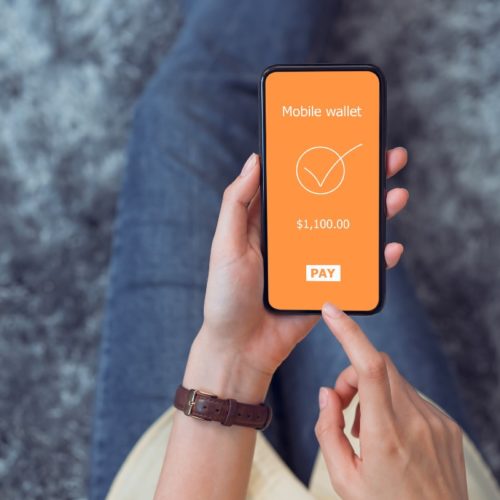Signing your child or teenager up for a debit card is more than just a way to give them easy access to cash. It’s also a great way to teach them how to save and spend responsibly.
The best debit cards for kids and teens give their parents or guardians ultimate control over spending. Some cards even allow you to limit where your kids spend money.
With so many options to consider, where should you even start? Keep reading to learn more about how to get the best debit card for your kids.
Best Debit Cards for Kids and Teens
- 🏆 Greenlight Debit Card: Best overall
- Chase First Banking: Best mobile experience
- FamZoo Prepaid Debit: Best for customizable features
- Current: Best for families with teens
- Capital One Kids Savings: Best return on investment
- gohenry: Best for paying allowance
- BusyKid Spend Card: Best for chore lists
- Mango Prepaid Card: Best for working teens
- Jassby Virtual Debit Card: Best for contactless payments
- American Express Serve: Best for college kids
- Step Banking: Best for credit building
1. Greenlight Debit Card: Best overall
Greenlight is one of the most popular kid-friendly debit card services — and for good reason. This prepaid card offers a great combination of parental control and financial literacy education. In fact, you can choose to receive a full suite of personal finance services, including saving and investing.
Those of us with sneaky teenagers, rejoice! Your kids can use the Greenlight Mastercard only at approved stores and sites. You’ll also receive an alert every time your kid makes a purchase. Plus, you can use the app to approve or deny requests for extra money.
Unlike most kids’ debit cards on this list, the Greenlight card actually pays cash back. If you have a Greenlight Max account, your kids will get 1 percent back on every purchase. Greenlight also lets your kids set up savings goals that pay up to 2 percent per year in rewards.
One of the app’s best features is an additional service that lets kids buy fractional shares of their favorite companies. Kids can start investing with as little as $1 without having to pay a trading fee. Parents get to approve every trade.
With Greenlight, kids and parents share an app but have a different interface. Parents can use the app to set controls and spending limits. At the same time, kids can use the app to monitor their balances and learn how money works.
Greenlight offers three plans. The basic plan costs $4.99 per month and includes free prepaid cards for up to five kids, access to the Greenlight educational app, parental controls and tools, and a 1 percent annual reward on savings.
The next level, Greenlight + Invest, costs $7.98 per month and offers everything the basic service does, plus investing. And for $9.98 per month, you can sign your family up for Greenlight Max to get the whole enchilada. That includes 2 percent back on savings, 1 percent cash back on purchases, and a black card that will make your kids feel like a million bucks.
Hopefully, they’ll be on their way to saving that much!
2. Chase First Banking: Best mobile experience
If you’re looking for a bank account that will teach your kids good money habits while letting you manage their cash from an app, check out Chase First Banking. If you’re an existing Chase checking customer, you can open this account online for your kids aged six to seventeen.
The Chase Mobile app lets you choose where your kids and teens can shop. And kids can use their debit cards to make both online and in-person purchases. You can also use any of Chase’s 16,000 ATMs to make a no-fee ATM withdrawal. In addition, there’s no monthly fee associated with this card.
You can use the app to assign one-time chores and then reward kids with deposits when they’ve done them. And, of course, you can create a recurring allowance direct deposit.
One of the Chase First Banking account’s best features is a savings goal tool that kids can use. This is a great way to make saving a habit. And kids will love to watch their progress via the mobile app.
What’s more, Chase gives parents and guardians the option to set spending limits. And kids can use the app to send a money request — which you can choose to approve or deny.
It’s a bit like a debit card with training wheels. This card can provide some peace of mind and protection while doubling as a great learning opportunity.
3. FamZoo Prepaid Debit: Best for customizable features
FamZoo is a financial provider that offers an online family “banking” system for kids from preschool through college. The company offers both an IOU account and a prepaid debit card to help your children develop good money habits and learn financial literacy.
With the FamZoo prepaid card, both you and your kids get a Mastercard. Your card is the parent funding card. You can load it with funds from your checking account via transfer or direct deposit. You can then use it to distribute the money among your kids’ cards. There’s no fee to transfer money between linked accounts.
The FamZoo prepaid debit account offers plenty of options to customize your own “family bank.” For example, you can establish money rules such as setting up a regular allowance, paying kids for completing chores, or billing teens for their share of the cellphone bill.
You can also encourage good saving habits by paying kids an interest rate that you define. On the other hand, if you loan money to your kids, you can also use the FamZoo account to charge them interest!
All this adds up to a prepaid debit card with plenty of learning opportunities. Because the FamZoo family bank account is customizable, you can start simple and add features and rules as your kids grow.
FamZoo charges a subscription fee to use its prepaid debit card. You can choose to make a monthly payment of $5.99 or opt for a prepaid plan at $39.99 for twelve months or $59.99 for two years. But the company offers a one-month free trial. So you can see if this prepaid debit card is right for your family with no risk.
4. Current: Best for families with teens
Families with several teenagers may want a solution that enables them to track multiple family members with one app. Enter Current.
There’s no minimum age requirement for a Current account. However, this financial app is geared toward teenagers.
When you sign up for Current, your kids will receive a Visa debit card. But as a parent, you’ll be able to monitor and limit your teens’ spending. You can even block specific merchants. (So definitely no GameStop unless their grades improve!)
This app allows parents to make instant money transfers from their checking account and set up chore lists. You’ll also receive a notification every time your kids use their cards.
At the same time, teens can use their Current accounts to round up savings and donate money to charity. The Current app will help teach them financial literacy in a way that’s hip and not dumbed down.
Current costs only $36 per teen per year.
5. Capital One Kids Savings: Best return on investment
Not all cards offer a great annual percentage yield (APY), and many don’t offer competitive interest rates at all. In fact, some cards cost you money each month instead of giving you a return.
That said, Capital One stands out by offering a pretty decent 0.30 percent APY, which is more than most standard checking or savings accounts. It’s also fee-free, including no opening fee or maintenance fee.
Additional features include a savings goal tool, automatic savings, and the ability to link multiple accounts or create accounts for specific savings goals.
You can move money six times per month from any linked account and even make mobile deposits by uploading checks for maximum flexibility and fewer trips to the bank.
6. gohenry: Best for paying allowance
The gohenry card is a kid-friendly debit card with an app that teaches your children and teens money management. You can load this prepaid debit card by making a weekly allowance by direct deposit. Your kids can also complete chores for extra money.
With gohenry, you can set weekly spending limits and control where your kids use their cards. For example, you can prevent your kid from buying video games with their card if they do poorly on a test or don’t complete their chores.
Like most apps, there are two accounts — one for the parent and one for the kids. The account has solid safety features, such as state-of-the-art chip security, PIN-protected transactions, and spending limits. The app also has 256-bit encryption and is FDIC insured.
After a free thirty-day trial, gohenry charges a monthly fee of only $3.99.
7. BusyKid Spend Card: Best for chore lists
Are you pulling your hair out trying to get your kids to do their chores? Maybe they just need a little financial incentive to get motivated.
BusyKid is one app and debit card service that can help get your kids into gear. This app teaches children about budgeting and money management, helping them build financial responsibility.
Key features include a chore chart and a preset allowance section that varies by age. The app also comes with an investing tool that gives kids the ability to invest their allowance in stocks in companies they love — like Netflix, Apple, and Disney.
The app links with the BusyKid Visa Prepaid Spend Card, and it’s among the cheapest debit card options. It costs only $19.99 per year to use the app and receive one Spend Card. Each additional card costs $7.99.
8. Mango Prepaid Card: Best for working teens
Once your kids become teenagers, their money needs change. That’s especially true if your teen starts working side hustles, or picks up an online job for teens and is bringing in steady cash.
This is where a card like Mango comes in handy. Mango offers a prepaid debit card that your kids can use wherever Mastercard is accepted. The card also links to a high-yield savings account to earn up to a whopping 6 percent APY on balances under $2,500.
To qualify for the 6 percent APY, you need to spend $1,500 and maintain a minimum balance of $25 each month. So it’s a good option for a teen with monthly expenses.
Parents can add funds to the account from a linked checking account and access an app that supports mobile management.
9. Jassby Virtual Debit Card: Best for contactless payments
Let’s face it: Debit cards are a hassle. They can get lost or stolen. And in the era of COVID, it makes sense to avoid swiping unnecessarily, touching germ-infested PIN pads, and having others handle our cards. So contactless payment is a great option for kids and teens.
One of the best options for this type of service is Jassby, which offers a virtual debit card for kids. In addition, parents can use the Jassby mobile app to track payments and send money.
Your kids can use their accounts to shop online in the Jassby Shop, which offers thousands of name-brand items. Or they can use the card at brick-and-mortar retailers that accept Apple Pay.
Jassby charges a monthly fee of $2.99, but if your kids make one virtual debit card purchase per month, the company will waive the fee. It’s a great way to give kids some spending freedom.
10. American Express Serve: Best for college kids
Some cards come with spending restrictions. You won’t have to worry about that with American Express Serve, which allows you to add up to $100,000 per year! It also has a higher spending limit than most cards and lets you reload for free.
You must be eighteen to have an American Express Serve prepaid debit account. It’s a good solution for graduating seniors and first-year college students who may still depend on parental support.
For example, you may be willing to give your kids some spending money in college but are unwilling to write them a blank check. This card can give you a way to make sure the money is going toward books and supplies — not funding a toga party.
11. Step Banking: Best for credit building
When making a credit score determination, one thing that credit bureaus look at is credit history. Generally speaking, the longer your credit history, the better your score. That can be a problem for young people.
One solution to help teens build credit is the Step Banking card, which acts as a combination credit card and debit card. Kids can build their credit histories while benefiting from an FDIC-protected card with no fee.
Here’s how it works: As a parent, you’ll load your kids’ Step Banking account. Then they can use the linked Step credit cards. At the end of the billing cycle, the Step account will automatically pay the credit balance. Since your Step account automatically pays balances in full, it’s a sure-fire way to build credit.
Frequently Asked Questions
Can a kid have a debit card?
Yes, with kid-friendly accounts. Many options allow adult caregivers to open a bank account on behalf of their children. These accounts often have debit cards that kids are allowed to use.
In some cases, minors can also be authorized users for credit cards. Guardians will want to make sure their children know how credit cards work and the dangers of credit before allowing them to use credit cards.
Who can get a debit card for a child?
Parents and legal guardians can get debit cards for their kids when they open a particular kid-friendly account. You’ll find our best picks for debit cards for kids above.
The Bottom Line
The right debit card for your kids should make everyone’s lives easier. Your kids can make ATM withdrawals when they need cash, and they can even initiate direct deposits through their part-time jobs. Some cards also make it easy to transfer money and receive cashback rewards.
Plus, a great kids’ debit card should let you monitor your children’s bank activity and send real-time notifications whenever they spend money. So you don’t have to worry about them blowing all of their hard-earned allowance on junk food!






No comments yet. Add your own